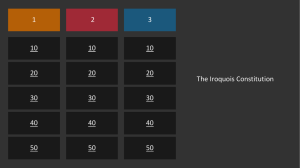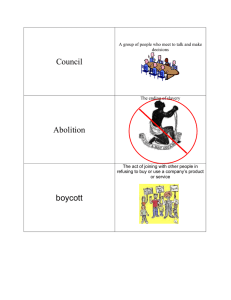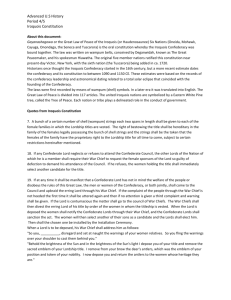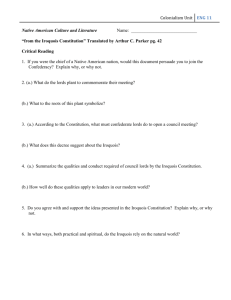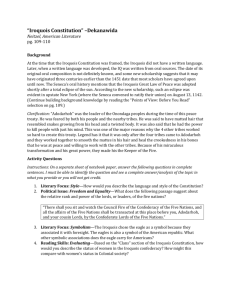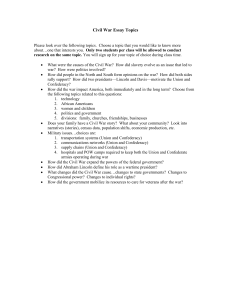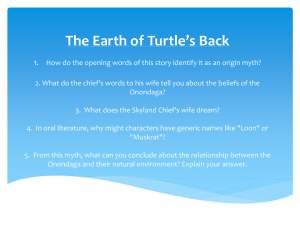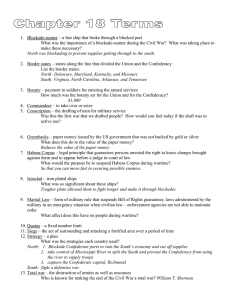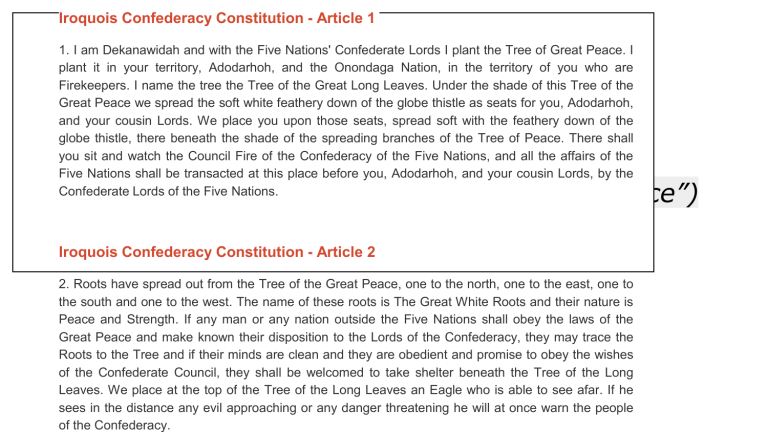
Iroquois Confederacy Constitution - Article 1 1. I am Dekanawidah and with the Five Nations' Confederate Lords I plant the Tree of Great Peace. I plant it in your territory, Adodarhoh, and the Onondaga Nation, in the territory of you who are Firekeepers. I name the tree the Tree of the Great Long Leaves. Under the shade of this Tree of the Great Peace we spread the soft white feathery down of the globe thistle as seats for you, Adodarhoh, and your cousin Lords. We place you upon those seats, spread soft with the feathery down of the globe thistle, there beneath the shade of the spreading branches of the Tree of Peace. There shall you sit and watch the Council Fire of the Confederacy of the Five Nations, and all the affairs of the Five Nations shall be transacted at this place before you, Adodarhoh, and your cousin Lords, by the Confederate Lords of the Five Nations. Gayanashogowa (the Iroquois’ constitution, meaning “greapeace”) Iroquois Confederacy Constitution - Article 2 2. Roots have spread out from the Tree of the Great Peace, one to the north, one to the east, one to the south and one to the west. The name of these roots is The Great White Roots and their nature is Peace and Strength. If any man or any nation outside the Five Nations shall obey the laws of the Great Peace and make known their disposition to the Lords of the Confederacy, they may trace the Roots to the Tree and if their minds are clean and they are obedient and promise to obey the wishes of the Confederate Council, they shall be welcomed to take shelter beneath the Tree of the Long Leaves. We place at the top of the Tree of the Long Leaves an Eagle who is able to see afar. If he sees in the distance any evil approaching or any danger threatening he will at once warn the people of the Confederacy. the Iroquois League. Include information about women’s roles within the Grand Council; the league’s founders, Hiawatha and Dekanawidah; and the similarities, if any, between the Great Peace alliance and other modern constitutions. Students should gather information from multiple print and digital sources, making sure to assess the credibility of each source. Emphasize that students should use standard grammar and sentence structure and should cite the sources used in their research. Guide to Citing Internet Resources Do you ever use the Internet to get information or pictures for your reports? You may not know this, but it's important (not to mention courteous) to cite all your sources. Intellectual property is property. Just as people shouldn't go about life taking things from others without asking, you shouldn't take images, sounds and/or words from the online work of others without giving them credit. This quick guide details the various Internet resources and the proper format for citing them. Basic Format The basic elements of an Internet citation are as follows: Author's last name, Author's first name. "Title of Document." Title of complete work (if applicable). Version or file number (if applicable). Document date or date of last revision (if known). Internet address, (Date of access). Specific Examples From a website: TOPIC SUMMARY By 1500, millions of Native Americans, belonging to more than 2,000 different groups, lived on the two continents of North America and South America. Over time, the different groups developed their own cultures. The great civilizations of the Olmec, the Maya, and the Aztec arose in present-day Mexico and Central America. The Inca Empire developed in the western highlands of South America. The Hohokam, the Anasazi, and the Mound Builders of the Ohio River valley were among the earliest and most advanced cultures in North America. These early North American cultures developed ways of life that were well suited to their environments.
